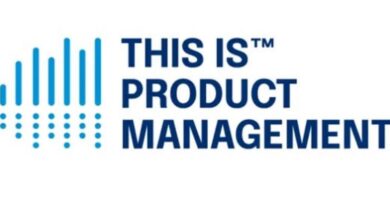What does it take to be a product manager within the public sector?

When Jeffrey Chai graduated from Singapore’s Nanyang Technological University with a degree in Mechanical Engineering, he wanted to continue pursuing the skills he picked up as a data science intern with Rolls-Royce in his second year of university.
This led him to take on the role of a data science manager within the Maritime and Port Authority of Singapore (MPA) for the next three years, where he worked on key data initiatives and AI projects, including the product development of the agency’s next-generation port systems.
He made the switch to GovTech Singapore in 2022, and now oversees Analytics.gov (AG), a secure whole-of-government data exploitation platform that enables agencies to kickstart data analytics and AI/ML projects.
Product owner and engagement specialist
What sets his current role apart is that he is a product owner and engagement specialist, rather than a manager, he shares.
Product managers usually define a product’s roadmap to meet strategic goals. However, as product owner, Chai is responsible for executing the product vision, working closely with the development team, and driving product adoption.
“I’m the one that is reaching out to potential agencies to get them to onboard our platform. We are a platform that is meant to serve government use cases, so it’s part of my overall product metrics to get as many user agencies on board as possible,” Chai says.
He promotes AG at various events and organises hands-on workshops to show agencies how the platform can help them.
“It’s about constantly hearing user feedback so that we make our platform more relevant and keeping up with all the developments happening in the market,” he explains.
Chai’s responsibilities include ensuring that the platform remains production-grade, reliable and has the most up-to-date models available for users, that are built with the necessary security and compliance requirements.
The platform also offers generative AI solutions and GPU-as-a-service via cloud providers, making it more attractive for agencies that are kickstarting projects that require scalable compute resources.
Measuring success by public outcomes
Within the public sector, the success of a product is measured by its impact on public good, rather than by profitability, says Chai.
“It’s about how we can bring service delivery for the betterment of citizens,” he says. A backend tool like AG is measured by product metrics such as user adoption, frequency of usage, and cost efficiency, he explains.
Most recently, GovTech partnered with the Ministry of Manpower to develop a GenAI-powered sensemaker tool with AG. The tool helps policy officers extract insights from large amounts of employment data. The sensemaker has halved the time required by the Ministry to extract and summarise data and this has saved 2,000 manhours over three months.
At present, AG has onboarded over 2,400 users, up from 800 users in 2022, he shares.
Within GovTech, Chai has been able to hone his approach to product management by attending networking sessions and interact with other product managers. He also had the opportunity to earn a graduate certificate in product management via GovTech’s Digital Academy in 2023.
These sessions cover different themes, such as running agile teams, defining product success quantitatively, defining product success, and more.
Chai says his former experience building data science products has helped him better support the engineers in his team and communicate technical aspects to his stakeholders.
Understanding how stakeholders think
He gets a sense of accomplishment from overseeing the development of a product, user-testing, convincing stakeholders, and ensuring overall success.

The internship at Rolls Royce gave Chai the opportunity to branch out of engineering into the world of data. He realised the opportunities offered by advances in data science and began taking more courses in the subject to enhance his skills.
His three-year stint at MPA allowed him to pursue data analytics and machine learning work.
“I think that slowly drew me to managing data science projects…I was slowly transiting from the person that is working on the actual projects to taking a step back,” he says.
“It’s not just about managing a product, but about making sure that your project succeeds.”
To understand how his stakeholders think, he enrolled in an online MBA course to develop his business acumen to add to his technical knowledge. The course allowed him to better appreciate the concerns of business leaders, he shares.
“While the product can offer the best end-user features possible, I saw a greater importance in articulating the value of the product to others,” Chai adds. That was when he applied to an open role in GovTech to fully embrace product management as a career and immerse himself in a tech-centric organisation.
Start early
For folks who are looking to become product managers, be it in the public or private sector, Chai shares that it is important to be a good strategist and communicator.
“A good product manager is able to ensure that his technical team can focus on what they need to do to develop their product,” he says. This can include managing stakeholders and proactively engaging users.
It is also important to keep oneself updated of tech developments and understand how these can lead to new opportunities for product growth and benefit users, he says.
Most importantly, anyone can become a product manager by developing a product mindset from trying to understand the bigger picture of why certain features are prioritized.
Even students who are interested in product management can expose themselves to other product managers by attending conferences and networking sessions, he notes.
“It’s about putting yourself out there and out of your comfort zone,” he says.
“Career preferences do change along the way… don’t be afraid to try new things,” Chai adds.



